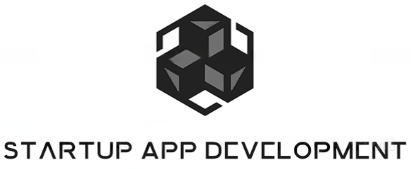In the dynamic world of startups, app development plays a pivotal role in determining the success of a venture. One of the most effective strategies that has emerged over time is the creation of a Minimum Viable Product (MVP). In this blog, we will explore how startups can leverage MVPs in app development to ensure a strong foundation and sustainable growth.
Understanding the Concept of an MVP
An MVP, or Minimum Viable Product, is a version of a product with just enough features to satisfy early adopters. It helps businesses test the product’s core functionality with minimal resources, allowing for quick iterations based on user feedback. This lean testing phase is crucial because it prevents unnecessary costs and aligns the product closer to what the market demands. Essentially, an MVP acts as the first tangible interaction between the product and its intended users, providing valuable data on user preferences, pain points, and unexpected use cases. Understanding these elements allows startups to pivot or persevere in their strategies, ensuring the product meets market needs before full-scale development.
Moreover, MVPs are a gateway to engaging with early adopters who can become advocates and valuable critics. These individuals often provide insights that could be overlooked by internal teams and offer suggestions that refine user experiences. Take, for instance, a startup developing a mobile app for wellness; by emphasizing core functionalities like step tracking and mood logging initially, they can gauge user interest and tweak features accordingly. As a result, the transition from MVP to a fully-fledged product becomes smoother and more aligned with what consumers genuinely desire. This incremental approach not only saves resources but also builds trust and credibility with users from the outset.
Why Startups Should Focus on MVPs
Startups often operate under constraints of time and budget. By focusing on MVPs, startups can save on development costs and reduce time-to-market. This agile approach allows them to quickly adapt to market demands and validate their business model before scaling. Imagine a tech startup aiming to launch an innovative mobile payment solution; by deploying an MVP, they can test features such as transaction speed and security with a limited audience, ensuring that crucial issues are ironed out before a wider release. This strategy helps prevent extensive reworking later on and minimizes financial risks typically associated with full-scale product launches.
Key Benefits of Developing an MVP
Developing an MVP provides several benefits. It helps in capturing critical user insights, minimizing risk, and establishing a feedback loop early in the development process. MVPs encourage a customer-centric approach, ensuring that the final product aligns with market needs. Additionally, startups can use MVP data to attract potential investors by demonstrating real-world application and scalability of their ideas. For example, some successful apps we use today, like Dropbox, began as MVPs and relied heavily on initial user feedback for future enhancements of its features. By highlighting user growth through MVP testing, startups can show credible growth forecasts and an adaptable business strategy.
Another significant benefit is the creation of a minimum viable product that can foster swift market entry. In highly competitive markets, being first matters, and an MVP can give startups that invaluable early presence. Early deployment allows startups to claim first-mover advantages, gathering traction while larger competitors may still be in their lengthy development stages. This process is not only about speed but also about embedding the brand in the consciousness of early adopters who become essential in igniting word-of-mouth and viral marketing. Through such efforts, a startup can sculpt its image and narrative while deriving insights that fuel strategic pivots.
Steps to Building a Successful MVP
Building a successful MVP involves key steps: identifying the core feature set, conducting market research, creating user personas, and developing prototype versions for testing. Iterative feedback and improvements are central to refining the product and enhancing its value proposition. Startups must start with the bare essentials and not overburden the MVP with unnecessary features. By focusing resources on the most impactful elements, developers can ensure that the product delivers its intended solution proficiently. Each iteration should bring startups closer to their final vision, while constantly evaluating the roadblocks and motivators that users experience. This continuous refinement process is what ultimately leads to a well-rounded product ready for broader market entry.
A critical step in developing a successful MVP is market validation, which ensures that the product resonates with potential users. This requires a deep understanding of the target market, competitor research, and strategic alignment of the MVP’s offerings with user needs. Additionally, creating user personas helps in maintaining a focus on the end-user experience, guiding design and feature inclusion decisions. By constantly testing assumptions against real-world feedback, startups can incrementally build on their strengths and address weaknesses before fully launching. This dynamic creates robust foundations for not just the product, but also the startup’s position within its industry.
Common Challenges and How to Overcome Them
Developing an MVP is not without challenges. Common issues include scope creep, unclear objectives, and misalignment with user expectations. Startups can overcome these challenges by maintaining a clear vision, focusing on the essential features, and actively engaging with their user community. It’s important to establish a robust project management framework that prevents scope expansion beyond the MVP’s original purpose. Regular stakeholder discussions help in maintaining alignment and ensuring that the MVP remains on track to solving the problem it was designed for. These approaches create a disciplined yet flexible environment where innovation is nurtured but not at the cost of clarity or strategic focus.
Testing extensively and iterating based on user feedback can be pivotal in navigating unforeseen challenges during MVP development. Startups should aim to foster a culture of openness where feedback is actively sought and valued. This prevents setbacks and builds a product that truly addresses user needs. Case studies of successful MVP instances often highlight the founders’ willingness to adapt their offerings based on concrete user feedback early in the process, resulting in a better-aligned final product. By generating a roadmap with clear milestones and investing in continual learning, startups can effectively manage the dynamic challenges that MVP development poses.
The MVP Advantage: A Tool for Startup Success
In conclusion, an MVP is not just a stepping stone in app development but a powerful tool that can significantly impact the trajectory of a startup. By adopting an MVP strategy, startups can validate ideas, optimize resources, and attract the right investors. Embracing simplicity and clarity in the app development process will ultimately lead to innovative solutions and successful ventures. For more detailed insights, visit our homepage.










